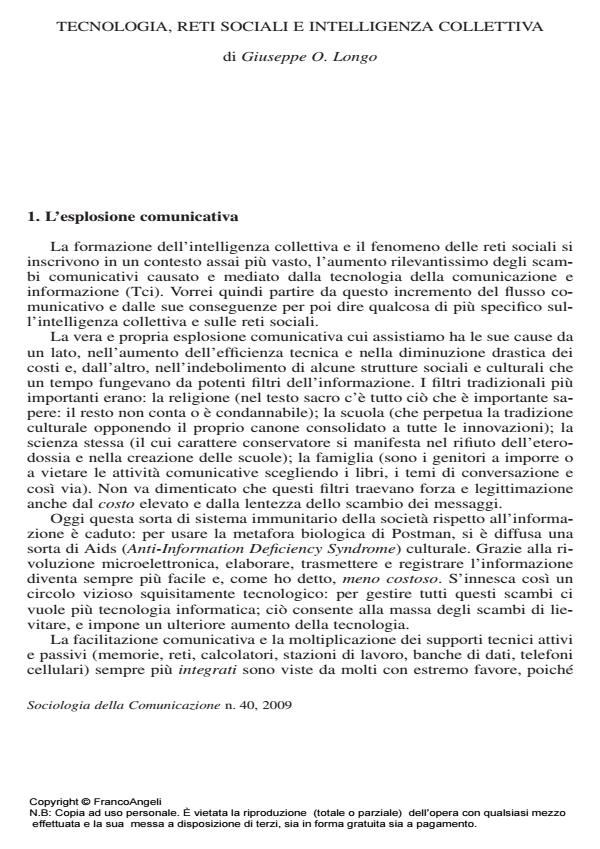Communication, technology, and the planetary creature
Journal title SOCIOLOGIA DELLA COMUNICAZIONE
Author/s Giuseppe O. Longo
Publishing Year 2010 Issue 2009/40
Language Italian Pages 23 P. 12-34 File size 696 KB
DOI 10.3280/SC2009-040003
DOI is like a bar code for intellectual property: to have more infomation
click here
Below, you can see the article first page
If you want to buy this article in PDF format, you can do it, following the instructions to buy download credits

FrancoAngeli is member of Publishers International Linking Association, Inc (PILA), a not-for-profit association which run the CrossRef service enabling links to and from online scholarly content.
Today biological evolution based on genetic mutations is largely exceeded by even faster cultural and technological evolution, with two main consequences: 1) the formation of Homo technologicus, a symbiotic creature where biology meets technology; 2) the formation of Planetary Creature, which originates from the interconnection of the individual man-machine symbionts and is heralded by the Internet and by the communication activities occurring in the Internet, in particular those taking place in the so-called social networks. The Planetary Creature is a single world-wide structure where communication and cognitive processes occur, developing into a connective intelligence which transcends and absorbs individual intelligences. This process can enhance individual abilities: the growing efficiency and the decreasing costs of the communication offer unprecedented opportunities for augmenting knowledge and creativity and for eliciting novel forms of intellectual activity. On the other hand, there might be negative consequences such as addiction to computers and virtuality, delegation of activities and abilities to machines, vulnerability of complex systems, undue control on individuals and economic exploitation. Some consequences of these developments are examined
Giuseppe O. Longo, Tecnologia, reti sociali e intelligenza collettiva in "SOCIOLOGIA DELLA COMUNICAZIONE " 40/2009, pp 12-34, DOI: 10.3280/SC2009-040003